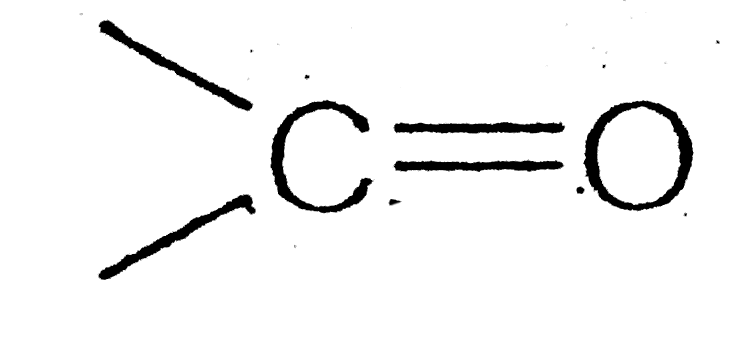Propane forms only one alkyl group.
To determine whether the statement "Propane forms only one alkyl group" is correct, we need to analyze the structure of propane and the alkyl groups that can be derived from it.
1. Understanding Propane Structure:
- Propane is an alkane with the molecular formula C3H8.
- Its structural formula can be represented as CH3−CH2−CH3.
2. Defining Alkyl Groups:
- An alkyl group is formed when one hydrogen atom is removed from an alkane.
- The general formula for an alkyl group derived from an alkane CnH2n+1 is obtained by removing one hydrogen atom.
3. Removing Hydrogen from Propane:
- We can remove a hydrogen atom from any of the three carbon atoms in propane:
- If we remove a hydrogen from the terminal carbon (the first or the last carbon), we get the propyl group C3H7 (specifically, n-propyl: CH3−CH2−CH2−).
- If we remove a hydrogen from the middle carbon, we get the isopropyl group C3H7 (specifically, isopropyl: CH3−CH− with the remaining CH3 on one side).
4. Identifying the Alkyl Groups:
- The two alkyl groups formed from propane are:
- n-Propyl Group: CH3−CH2−CH2− (from the terminal carbon)
- Isopropyl Group: CH3−CH− (from the middle carbon)
5. Conclusion:
- Since propane can form two distinct alkyl groups (n-propyl and isopropyl), the statement "Propane forms only one alkyl group" is incorrect.
Final Answer:
The statement is false; propane forms two alkyl groups: n-propyl and isopropyl.
- Propane is an alkane with the molecular formula C3H8.
- Its structural formula can be represented as CH3−CH2−CH3.
- An alkyl group is formed when one hydrogen atom is removed from an alkane.
- The general formula for an alkyl group derived from an alkane CnH2n+1 is obtained by removing one hydrogen atom.
- We can remove a hydrogen atom from any of the three carbon atoms in propane:
- If we remove a hydrogen from the terminal carbon (the first or the last carbon), we get the propyl group C3H7 (specifically, n-propyl: CH3−CH2−CH2−).
- If we remove a hydrogen from the middle carbon, we get the isopropyl group C3H7 (specifically, isopropyl: CH3−CH− with the remaining CH3 on one side).
- The two alkyl groups formed from propane are:
- n-Propyl Group: CH3−CH2−CH2− (from the terminal carbon)
- Isopropyl Group: CH3−CH− (from the middle carbon)
- Since propane can form two distinct alkyl groups (n-propyl and isopropyl), the statement "Propane forms only one alkyl group" is incorrect.
The statement is false; propane forms two alkyl groups: n-propyl and isopropyl.
Topper's Solved these Questions
- BOOK - ICSECHAPTER - ORGANIC CHEMISTRY : SOME BASIC PRINCIPLES AND TECHNIQUES EXERCISE - FILL IN THE BLANK TYPE QUESTIONS46videos
ORGANIC CHEMISTRY : SOME BASIC PRINCIPLES AND TECHNIQUES
- BOOK - ICSECHAPTER - ORGANIC CHEMISTRY : SOME BASIC PRINCIPLES AND TECHNIQUES EXERCISE - ASSERTION - REASON TYPE QUESTIONS11videos
ORGANIC CHEMISTRY : SOME BASIC PRINCIPLES AND TECHNIQUES
- BOOK - ICSECHAPTER - ORGANIC CHEMISTRY : SOME BASIC PRINCIPLES AND TECHNIQUES EXERCISE - OBJECTIVE ( MULTIPLE CHOICE ) TYPE QUESTIONS142videos
ORGANIC CHEMISTRY : SOME BASIC PRINCIPLES AND TECHNIQUES
- BOOK - ICSECHAPTER - HYDROGENEXERCISE - NCERT TEXT-BOOK EXERCISE (With Hints and Solutions)53videos
HYDROGEN
- BOOK - ICSECHAPTER - REDOX REACTIONS (OXIDATION AND REDUCTION)EXERCISE - NCERT TEXT-BOOK. EXERCISES ((With Hints and Solutions)69videos
REDOX REACTIONS (OXIDATION AND REDUCTION)
Similar Questions
Knowledge Check
- Question 1 - Select One
How many isomers are possible for the alkyl group −C4H9
A2B3C4D5 - Question 2 - Select One
In which of the following reactions migration of alkyl group from carbon to oxygen is observed ?
APinacol-pinacolone rearrangementBBayer-villiger oxidation.CPrepration of phenol from cumene hydroperoxide.DBoth (b) & (c )
Write the common name of the following alkyl groups.

View SolutionHow is an alkyl group represented ? Give the structures and the names of the alkyl a groups which originate from (i) n-butane (ii) isobutane.
View SolutionExplain why fluorine forms only one oxoacid, HOF.
View SolutionWhich factors will increase the reactivity of
 group?
group?
(i) Presence of a group with positive inductive effect.
(ii) Presence of a group with (-ve) inductive effect
(iii) Presence of large alkyl group.View SolutionWhy does propane give two alkyl groups whereas ethane only one?
View SolutionWhat are alkyl groups ? Write the structures of all possible alkyl groups which can be obtained from propane and butane.
View Solution

